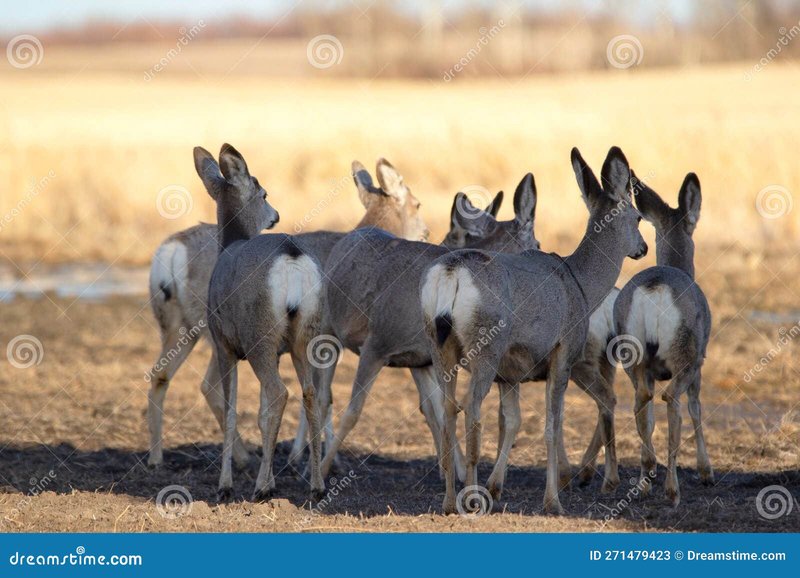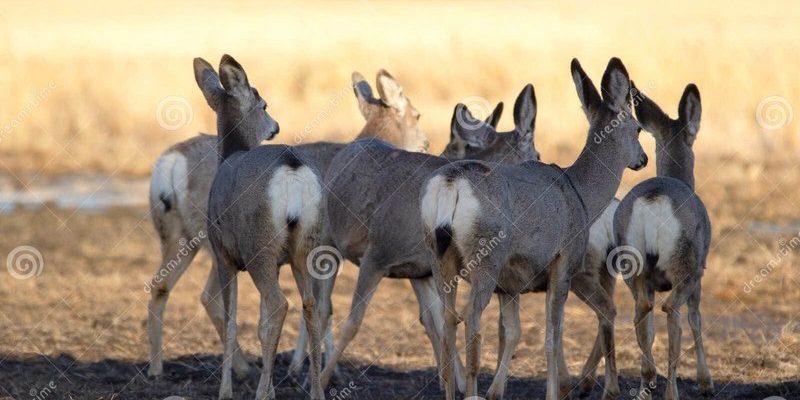
Mule deer, like many wild animals, have unique ways of nurturing their fawns. Just as some people have their own child-rearing techniques, mule deer employ different strategies to ensure their offspring not only survive but thrive. This article will take you through the journey of how mule deer raise their young in the wild—from the moment they give birth to the fawns’ independence. So grab a cup of coffee, and let’s dive into the nurturing world of mule deer!
Finding a Safe Place to Give Birth
When a female mule deer, called a doe, is ready to give birth, the first priority is finding a safe and secure location. Here’s the thing: fawns are vulnerable right after birth, making it crucial for the doe to choose a spot that offers protection from predators.
Typically, the doe will look for dense vegetation, such as bushes or tall grasses, where she can hide her fawn from view. Think of it like finding the perfect hideaway when you need a little privacy. This area should be away from trails and prying eyes, minimizing the chances of being spotted by hungry predators like coyotes or mountain lions. Often, these chosen spots are located in areas that are familiar to the mother, allowing her to feel safe and secure.
After giving birth, the doe will clean her fawn to remove any scent that might attract predators. This is a vital step in ensuring the little one remains hidden. It’s a bit like a family preparing for a surprise party—everything must be perfect and under the radar!
The First Few Days
Once the fawn is born, it needs to stay low for the first few days of its life. During this period, it will spend most of its time lying still in the tall grass or brush, relying on its spotted coat for camouflage. This natural camouflage is incredibly effective; it helps the fawn blend into its surroundings, making it nearly invisible to any wandering predators.
During this time, the doe will often leave the fawn alone for short periods to search for food. This can be a tense moment, as she instinctively knows that staying away means her little one is at risk. However, staying away helps ensure she can nourish herself, which is crucial for producing milk. It’s a balancing act, much like how parents juggle work and home life—even if it means leaving the kids alone for a bit.
While the fawn is resting, it hardly moves or makes noise. This behavior is a defense mechanism. If a predator approaches, the fawn will remain still, relying on its natural instinct to go unnoticed until the danger has passed.
Nursing and Feeding
Nursing is a vital part of a fawn’s early life. The doe produces rich, nutrient-dense milk that helps the fawn grow quickly and develop strength. In the wild, every moment counts, so the fawn tends to nurse frequently—often every few hours. As they feed, they become stronger and more skilled at moving around, which is essential for their survival.
Mule deer fawns also start nibbling on vegetation around two weeks of age. At this stage, they learn about their diet and what foods are safe to eat. You might think of it like teaching a child about healthy eating: it’s crucial for their growth! The doe will often lead her fawn to good feeding areas, guiding it to the best patches of grass and leaves while keeping it safe.
Throughout this nursing phase, the bond between the doe and her fawn grows stronger. The doe is incredibly protective, staying close by to safeguard her young. It’s heartwarming, almost like a shield made of love.
Learning to Navigate the World
As the fawn grows, it begins to explore its surroundings more. At around three weeks old, they start to venture away from the hiding spot. Learning to navigate their environment is crucial; they must become familiar with potential dangers and safe areas. This is when the doe starts teaching her young about their world.
The learning process involves plenty of discoveries. Fawns will follow their mothers as they move through the terrain. This is the perfect time for the doe to show them where to find water, food, and how to recognize signs of danger. It’s kind of like giving your kid a lesson on street smarts—important for their future!
During this exploration, the doe will also teach her fawn how to run and jump. Young fawns are quite playful, using their energy to practice their skills. They often engage in mock-chases or leap around as their mother watches. This playful behavior is more than just fun; it’s a training ground for survival.
Staying Safe from Predators
Predators are always a lurking threat to young fawns, so learning to stay safe is a top priority. The doe is hyper-aware of her surroundings and will use various strategies to protect her young.
One common approach is called the “stotting” behavior, where the doe will jump high into the air to attract attention away from her fawn. It’s a risky move, but the idea is to draw predators toward herself instead of the vulnerable young one. You might think of it as a distraction technique—like a magician pulling a rabbit out of a hat!
The doe also stays vigilant and listens for any signs of trouble. If she senses danger, she will often move her fawn to a safer location. This instinctual behavior underscores the importance of a mother’s protective nature in the wild. The bond they share is strong, rooted in the natural need to keep each other safe.
Independence and Growing Up
As summer approaches, fawns continue to grow and develop. By the time they reach three months old, they are more independent but still rely on their mother for guidance and protection. At this age, they’ve learned a lot about foraging for food and avoiding predators, but their mother still plays a vital role.
Eventually, the fawns will become less dependent on their mothers and begin to explore the world on their own. It’s a bittersweet time—a period of growth and newfound independence. The mother will gradually reduce her supervision, encouraging her fawn to venture out and live life as a mule deer should.
By the time fall arrives, many fawns are ready to leave their mothers to join other deer groups or explore isolated areas. It’s a natural cycle of life, reflecting the broader theme of growth and independence that resonates not only in the animal kingdom but in our own lives as well.
The Importance of Motherhood in Mule Deer
Motherhood in mule deer is a remarkable journey, full of challenges and triumphs. The way they raise their young illustrates a deep connection to the environment and the instinctual behaviors developed over generations. Each stage of a fawn’s life is carefully crafted for survival, emphasizing the importance of nurturing and protection.
The skills fawns learn from their mothers are vital not just for their survival but for ensuring the overall health of the mule deer population. When you see a mother mule deer and her fawn, you’re witnessing a dance of instinct, care, and nature’s design.
As we reflect on the journey of mule deer and their young, it serves as a reminder of the beauty and complexity of life in the wild. Every mother, no matter the species, imparts lessons that will resonate through generations.
In the end, the way mule deer raise their young highlights their adaptability and resilience—the same qualities that help all of us navigate our paths in life.

